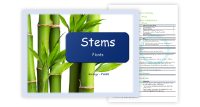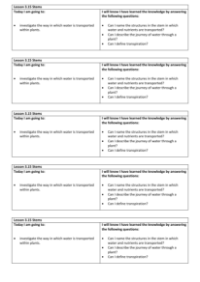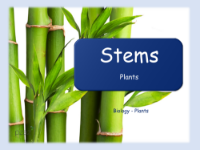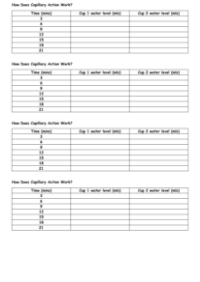Stems - Lesson Plan

Science Resource Description
The lesson plan from The Primary Science Advisory Service Ltd delves into the fascinating journey of water through plants, specifically focusing on the function and significance of stems. Year 3 students are set to explore the process of water transportation within plants, a key aspect of the National Curriculum for science. They will build upon previous knowledge, such as identifying different parts of a tree and understanding the basic needs of plants for healthy growth. Through a series of experiments and observations, pupils will learn to name the structures within the stem responsible for water and nutrient transport, describe water's path through a plant, and define the concept of transpiration. The lesson plan also aims to correct common misconceptions, such as the belief that plants absorb water through their leaves or that stems are solely for support.
Engaging in practical activities, students will observe how dye moves through carnations to visualise the xylem's role in transporting water. They will also witness capillary action in a tissue paper experiment, demonstrating the scientific principles that enable water to travel against gravity within plants. The equipment list includes everyday items like food colouring, plastic cups, and celery sticks, making the experiments accessible and hands-on. Cross-curricular links are made to subjects such as English, Maths, and History, with suggestions for creative and analytical extensions of the lesson's content. Health and safety considerations are noted, ensuring a secure learning environment. The lesson concludes with a plenary where pupils assess their understanding of the key concepts of stem functions and the process of transpiration in plants.






